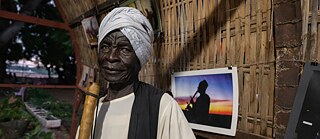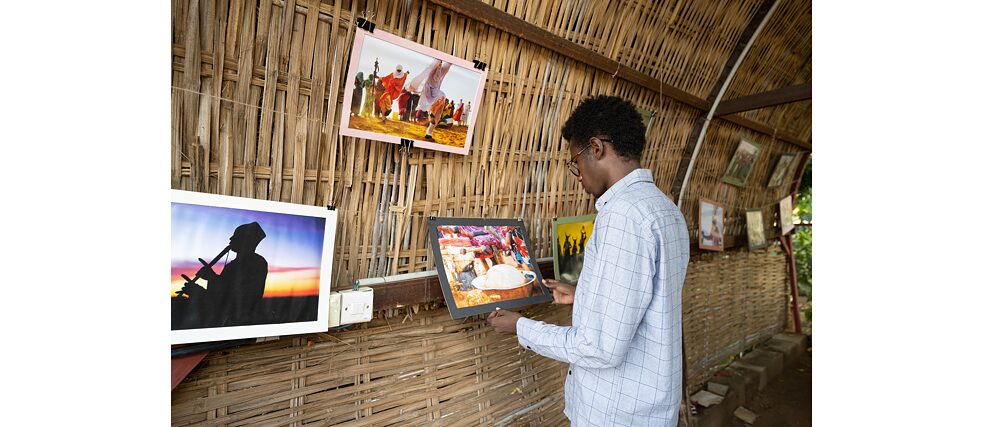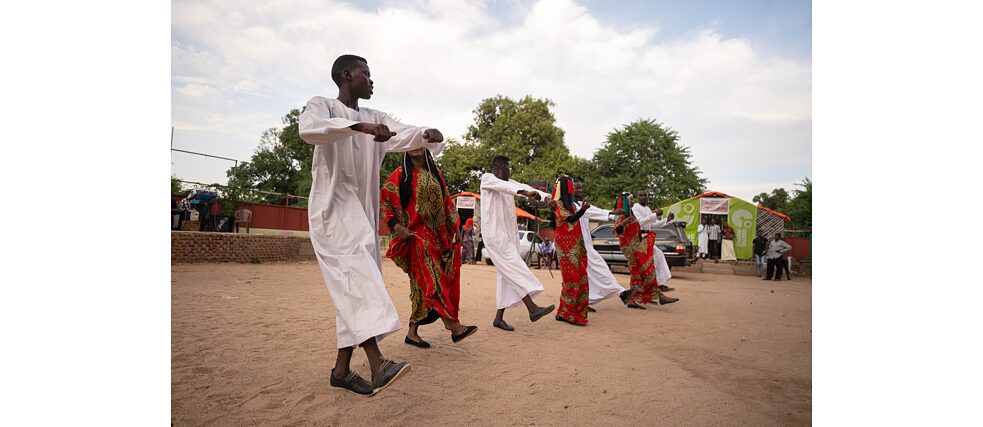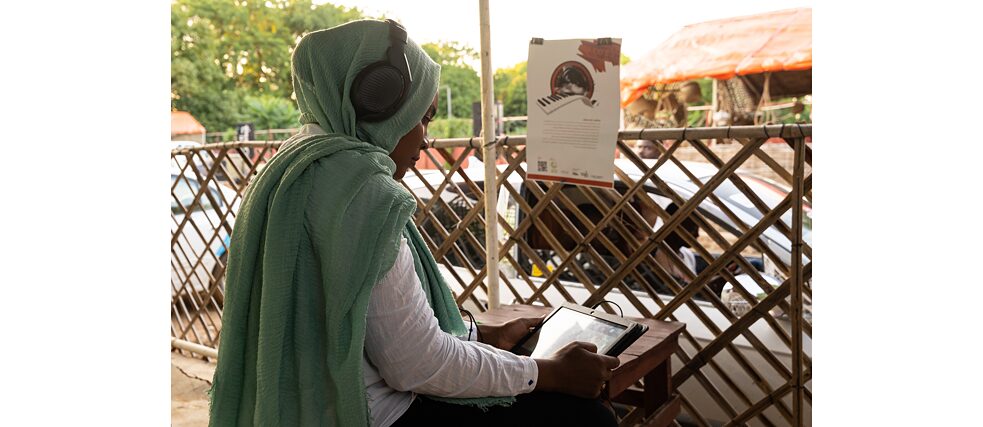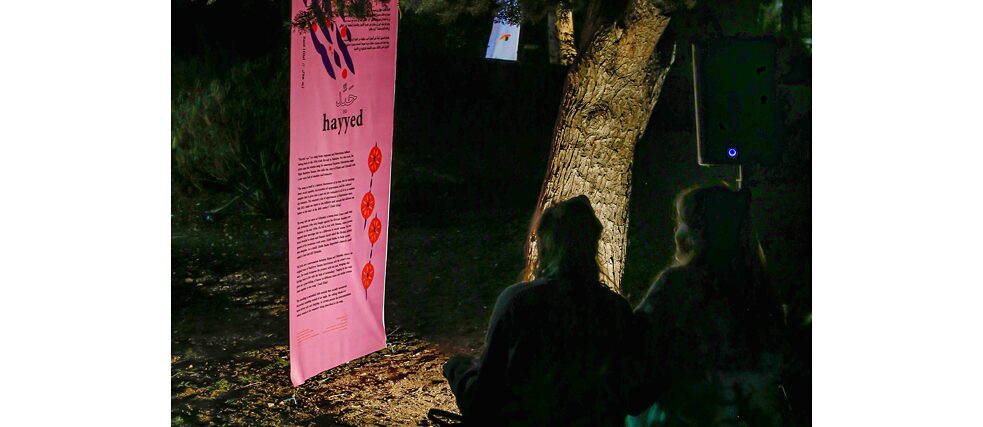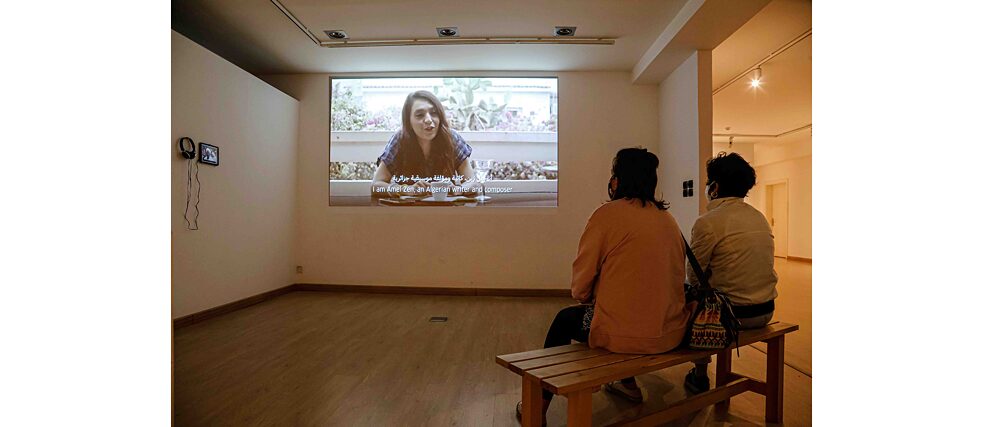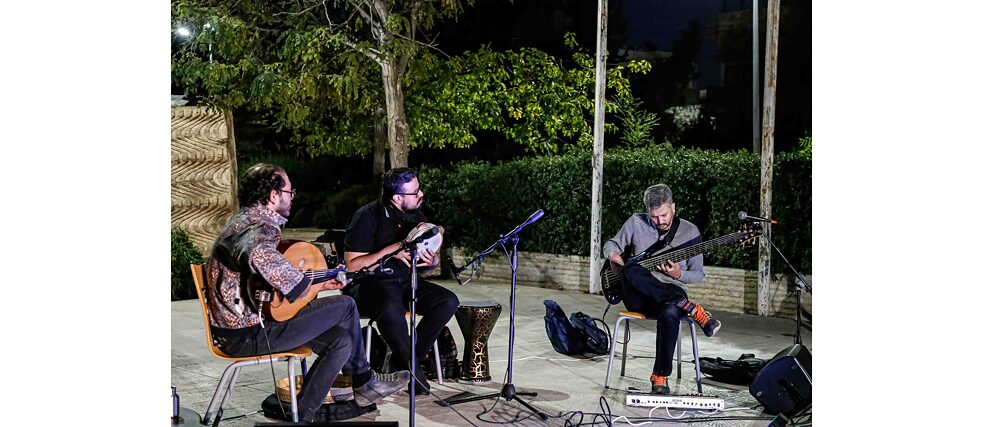What constitutes as musical heritage? How can it be made audible? The exhibition project “Mirath:Music” invited various musicians from West Asia, Northeast and North Africa to explore their regions' traditions. Lebanese author Rayya Badran takes a look at the musical history of the region and the produced tracks full of past struggles.
Musical heritage, or heritage at large, is a delicate terrain to navigate in that poses crucial, and perhaps uncomfortable, questions regarding cultural appropriation, territorial or geographical politics, among many more. For the exhibition project Mirath:Music – Mirath is Arabic for heritage, legacy - different musicians from West Asia (the term Middle East is on purpose not used, as it is a colonial term given by colonial powers to describe the region), Northeast and North Africa were invited to dig into the rich, yet fragmented musical history of the region and to produce individual tracks that articulate their personal engagement with the sounds, vocal traditions, and instruments for which they have personal or musical affinities. Questions around what constitutes a musical heritage are the real locus of this exhibition which renders audible the musicians’ reflections and musical exchanges during the time of production.Since West Asia, Northeast and North Africa are regions that have been endured decades of colonialism, wars, and perennial economic crises that caused millions of people to emigrate or flee, it would be impossible to claim that musical traditions are fixed or that they are monolithic from which we can confidently chart each and every one at any given time. Musical traditions that originate from these regions are versatile and itinerant, yet they evoke sonic and vocal expressions of past struggles and forms of community.
The neglect of musical heritage
In the past few years, the regions of West Asia, Northeast and North Africa have witnessed an increasing interest from both native and diasporic musicians and composers but also Western music professionals in unearthing forgotten musical practices or musicians. But because Western labels (or institutions) tend to have more resources to publish their musical findings or initiate projects that focus on musical heritage, however difficult they are to find and acquire, we see less of these efforts grow from within the region, bar a few projects initiated by natives or residents. This current paradigm doesn’t necessarily result from a lack of curiosity or attachment to the vast history of musical practices but a lack of means and is a direct consequence of the institutional neglect in most countries in the region towards arts and culture.Similar to other cultural practices in West Asia, North and Northeast Africa, the material history of music is often incomplete due to neglect and/or destruction caused by decades of political conflicts and waves of migration in the regions it originates from. Written and aural records are therefore scarce and scattered in either public or private institutions in the West and more scarcely in the region where the music originates from, which poses further challenges for composers, musicians and researchers to access a part of this history. Yet, what distinguishes music from other artistic practices is its aural nature and the fact that it does not necessitate material support or a score to be transmitted, sung, or played, which is why it endures and travels beyond borders and why it remains a significant tool of resistance among millions of people, not just within the confines of academia or musicianship. Of course, research or archives do exist but they are not widely accessible by the general public and often require travel and permission to access them.
What types of musical knowledge exist?
For the Mirath:Music exhibition, composers, musicians and sound artists, including Amel Zen from Algeria, Ghassan Sahhab from Lebanon, Hajar Zahawy from Kurdistan-Iraq, Mohamed Adam from Sudan and Zaid Hilal from Palestine, were invited to work with sound material on musical heritage. Through their work, they encountered questions like: Is an archive a real reflection of a certain period in time? If the archive is an institutionally formed container of knowledge, then to what extent does it reflect the diversity and constantly shifting nature of culture on the ground? What types of musical knowledge exist beyond the institutional archive and how differently does one engage them? If institutional archives serve as official repositories of knowledge, drawing state narratives about the historical fates of nations and peoples, how do we begin to chart and understand what lies beyond them? What is retained in the memory of singers and musicians is lasting, possibly even more so outside the walls of institutions and archives because they transmit what archival data cannot. They communicate a sense of belonging through musicality and song, they transfer a love of the land, which in itself is a container of knowledge and wisdom. No matter how far one can become from the land and its people, the fervor of a song, the reverberation of a sound, and the textural quality of an instrument contain within them an aurality beyond the intelligible. Perhaps what is learned outside of these material archives evokes histories, pains and longings that can never be audible in studio or field recordings.One of the fundamental purposes of national archives is to make available aspects of history of a nation, peoples, and cultures. But is an archive ever really complete to begin with? Do musical recordings found in European institutions or indeed in the regions they originate from not bear the colours of colonial ethnographic recordings? Some of the musicians and composers in the Mirath:Music exhibition used sound materials from institutional archives (the AMAR Foundation from Libanon, CMAM from Tunesia, the Phonogrammarchiv from Germany) or have chosen to include field recordings in their sonic works produced on their own. All of the musicians and composers have prioritised dialogues with late composers or musical traditions, but also looked inward into their own histories and pasts. These choices further complicate the questions above about what is known, or yet to be known, in non-traditional repositories of knowledge.
In many ways, the musical compositions in the Mirath:Music exhibition lay bare the tension between what is transmitted orally - in sounds travelling through collective memory and as forms of resistance - and what is found in the confines of sound and musical archives. Perhaps what is uttered and sung paves the way to challenge the grand historical narratives drawn by the archives of perceived monolithic and mono-linguistic countries in the region.
Musical and vocal traditions withstanding time
As such and despite a current lack of concerted efforts to document and collect the expanse of musical heritage outside of private initiatives or traditional public institutions, many musical traditions and sung popular folktales, some of which feature in the exhibition such as Daynane from the Amazighi regions in Algeria, continue to be transmitted, but also appropriated, by generations and remain present in the collective memory of different populations, young and old, across the region. This is evident in the rendition of Sasa (Hajouri) by Sudanese musician and researcher Mohamed Adam, which he describes as "a vocal form popular in Darfur and has been known since antiquity”, that shows how musical and vocal traditions withstand the tribulations of time and continue to evolve from one generation to another. Whereas recordings and scores can decay, oral transmissions keep alive a form of musical congregation that is crucial to the cultural survival of its people. The lyrics of this popular Hajouri song are learned “from popular memory”.This type of transmission is perhaps not specific to Sudan but perhaps what is specific is how it becomes a form of political and cultural resistance, and to what extent it is able to remain on one’s tongue when the present demands it to be sung and played. When songs travel, they rarely fade away; they are lodged in the memory of those who sung them and continue to sing them. In the case of Palestinian musician Zaid Hilal’s Hayyed, a lover’s lament that dates back to the Arab Revolt of 1936, and which Hilal has reworked to introduce his own voice, as if to seek communion with the ancestors of his land who faced the same oppressors he faces today.
What I find distinctive is this exhibition’s attempt to start conversations about the expanse of musical heritage - one that disturbs the perceived cohesion of nation states and the cultures they attempt to appropriate or hide - through the prism of the musicians' personal histories, which is at the core how these traditions are manifested and valued. Instead of splicing up the sounds they want to include into an original composition, the composers have inserted themselves into the originals, as if attempting to pierce through this opaque musical past, however joyful or painful it may be. What is reserved for the future, and likely serve as future heritage, is what is circulating right now in the cracks of technology, from the mouths of youths in revolt or in ecstasy.
Related Links
May 2022
